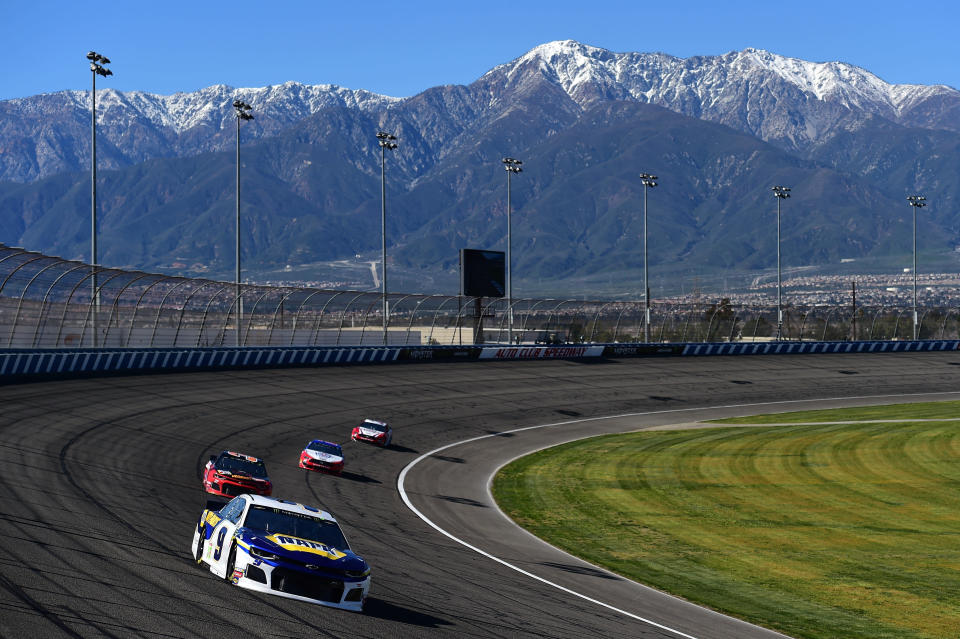NASCAR ditches group qualifying at all oval tracks

Goodbye group qualifying at ovals.
NASCAR announced Wednesday that it was getting rid of group qualifying at all tracks save for road courses. The decision comes after NASCAR’s new rules for 2019 meant that Cup Series cars needed to draft with each other at bigger tracks to get the fastest time possible.
That drafting scenario — where the lead car in a group is the slowest car in the group — meant teams tried to wait as long as possible at intermediate tracks to post a qualifying time. And NASCAR was not a big fan of that.
The change isn’t just for the Cup Series, however. It’s for all three NASCAR series and begins with the Truck Series race at Dover on Friday. And NASCAR’s new qualifying format looks a lot like the old format.
At ovals 1.25 miles and longer, drivers will get one qualifying lap by themselves. At tracks shorter than 1.25 miles, drivers will get two laps by themselves and the fastest lap of the two will count. There will not be multiple rounds of qualifying. The driver who posts the fastest lap in his one qualifying attempt will start first.
Group qualifying was implemented in 2014
Single-car qualifying is, and has always been, the most straightforward way to decided who will start first in a stock car race. But NASCAR moved to a multi-round group qualifying format for all of its tracks in 2014 with the reasoning that group qualifying would be more entertaining for fans. Here’s what then-NASCAR vice president Robin Pemberton had to say in January of 2014:
"We believe the timing is right for a new qualifying format across our three national series," Pemberton said. "This style of group qualifying has all the makings of being highly competitive and more engaging to our fans in the stands and those watching on television and online.
"For the drivers and teams, we believe this new qualifying will fuel even greater competition leading into the events. Additionally, it provides our tracks, broadcasters and other key partners with a greater opportunity to develop more entertaining content for our race weekends."
You’ll notice some of the very same themes in NASCAR vice president Scott Miller’s statement on NASCAR.com promoting Wednesday’s change from group qualifying to single-car qualifying.
“One of the other things to make a compelling program out of it is we’ve seen the use of the ghost car [on television],” Miller said. “That’s going to be a big element in presenting a quality show. I think fans are going to be able to see which drivers drive in deep, which drivers roll the middle faster and get off the corners faster and really give the talent in the booth something to talk about.
“Another interesting aspect is every team has a good shot of getting covered during the qualifying session. We’re building in a few two-minute breaks to where TV can get some spots in and not break away from live action. That’s one of the goals in this, and I think with those designated spots and breaks we will be able to present almost a whole qualifying session live without going away.”
NASCAR put itself in a bad spot to start 2019
NASCAR’s lack of foresight put itself in the position of making a midseason qualifying switch.
Not long after group qualifying was implemented over five years ago, the series realized that Truck Series and Xfinity Series teams could draft with each other to post faster laps at certain tracks. So it made the decision to implement single-car (or truck) qualifying at those larger tracks to get rid of the draft impact.
And it even made a tweak in the Cup Series too. Group qualifying was used for the first time in pole qualifying for the Daytona 500 in 2015 and a big crash happened. Not long after that, NASCAR moved to re-implement single-car qualifying at Daytona and Talladega.
So it clearly knew that drafting would be a big factor for Cup teams in 2019. Yet it decided to let teams draft and figure out the best way to post a fast lap. And when that figuring out led to all 12 cars in the final round of qualifying at Auto Club Speedway failing to post a qualifying time, NASCAR wasn’t unhappy with itself. It was unhappy with the “optics” of teams waiting so long.
That unhappiness could have been avoided with a little preseason critical thinking.
– – – – – – –
Nick Bromberg is a writer for Yahoo Sports.
More from Yahoo Sports:


